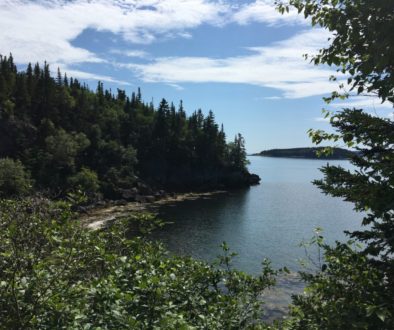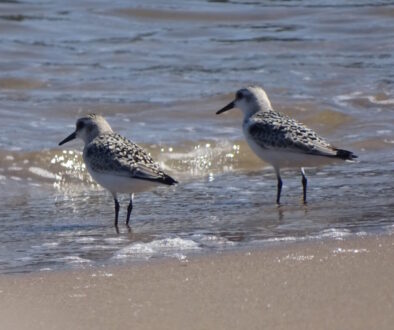Response to Crown Task Force: More Conservation Needed, Not Less
The report of the Crown Land Task Force, chaired by Dr. Norm Betts, was released in late November and may raise more issues than it solves. We are concerned that several of the recommendations made by the Task Force, if implemented, will exacerbate an already challenging problem in New Brunswick’s woods.
Areas managed specifically to conserve old forest habitats, riverbank buffers, deer wintering habitat, and permanent protected areas (called the “Conservation Forest” by the Department of Natural Resources) together represent about 30{a3162b1395e34f5bc6dd788a255c8e2a209e2a614c3b42176989b624267eff88} of Crown land. The Task Force suggests that the needs of wildlife can be met with even less conservation forest (28{a3162b1395e34f5bc6dd788a255c8e2a209e2a614c3b42176989b624267eff88}). This fails to take into account additional pressures that may be placed on forests by climate change impacts, and by the proposed doubling of the predominantly mixed-wood forest area converted to plantations. Current data suggest that the proposal for a greater proportion of land devoted to conifer plantation is a risky approach if we are to maintain healthy populations of sensitive plants and animals. From a conservation perspective, our forests are being managed too close to the margins, and decreasing the proportion of conservation forest will take a toll on New Brunswick’s wildlife.
The report recommends increasing the amount of Protected Natural Areas to 12{a3162b1395e34f5bc6dd788a255c8e2a209e2a614c3b42176989b624267eff88} of Crown land (about 6{a3162b1395e34f5bc6dd788a255c8e2a209e2a614c3b42176989b624267eff88} of the provincial land base). Even then, New Brunswick would still be the 2nd lowest province in Canada, just above PEI, in terms of protected areas. While more protected areas are needed, this small increase would not compensate for reducing habitat conservation elsewhere.
The Task Force recommends setting an economic goal for forest products at $4 billion. Setting such a hard target in a dollar value is, in our opinion, a flawed approach to natural resource management, and may increase conflict over natural resources. Forests are subject to climate and other environmental and human disturbances, while the values of our forest products are at the mercy of international markets. When prices received for wood products are low, as is currently the case, a target based solely on economic value will likely increase the demand for wood volume, leading to further encroachment on wildlife habitat.
The report recommends that forestry be placed under the control of a Special Operating Agency, run by a Chief Forester. We cannot support management of public lands that is separate from the Department of Natural Resources and has unclear accountability to the public. Government manages public land in the public trust, and there need to be clear lines of transparency of decisions, accountability to public values, and clear avenues for public input into management goals and objectives. Accountability and input recommendations were made by the 2004 all-party Select Committee on Wood Supply, and need now to be implemented.
Finally, the report acknowledges that “in this period of low timber production, meeting 100{a3162b1395e34f5bc6dd788a255c8e2a209e2a614c3b42176989b624267eff88} of economic and environmental objectives will not be achievable”. Failing to meet environmental objectives that forest ecologists already consider inadequate is unacceptable. New Brunswickers have repeatedly stated that their values for public land give strong priority to ensuring that water and habitats are protected, and the resource base is resilient enough to provide a variety of products and resources into the future. It is not an acceptable trade-off to reduce environmental objectives because the wood supply resource is going through a low point.
In a province where we are struggling to make sure there is a future for a forest-based economy, we cannot afford to compromise the very forest ecosystem that would allow a diversified forest economy to be realized. Our forest industries need to be developed based on what the forests can afford to give, not an arbitrary financial goal driven by external market forces.
Roberta Clowater, Executive Director, Canadian Parks and Wilderness Society, NB Chapter, Fredericton
David Coon, Executive Director, Conservation Council of New Brunswick, Fredericton
Tony Diamond, Ph.D., Faculty of Forestry and Environmental Management, UNB, Fredericton
Graham Forbes, Ph.D., Faculty of Forestry and Environmental Management, UNB, Fredericton
James Marriner, Past President, NB Wildlife Federation, Upper Coverdale
Roger Roy, RPF, Ph.D. Faculté de foresterie, Université de Moncton, Edmundston
Marc-André Villard, Ph.D., Département de biologie, Université de Moncton, Moncton
Vince Zelazny, Registered Professional Forester, Fredericton


